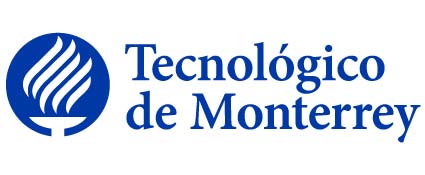
|
|||||
Disciplina asociada:Mecatrónica |
|||||
Escuela:
Ingeniería y Ciencias
|
|||||
Departamento Académico:
Mecatrónica
|
|||||
Programas académicos: |
|||||
Requisitos:(Haber Aprobado M2019 y Haber Cursado MR2009 y Haber Cursado MR2008) |
|||||
Equivalencia:MR3026 |
|||||
Acreditables:MR00035 |
|||||
Intención del curso en el contexto general del plan de estudios: |
|||||
|
Es un curso de nivel avanzado que tiene la intención de que el alumno conozca, evalúe, seleccione y maneje adecuadamente los diferentes equipos y herramientas tecnológicas que permiten la comunicación e integración de componentes para la automatización de un sistema de manufactura. Requiere conocimientos previos de propiedades de los materiales, elaboración de layouts, manejo de herramientas CAD, procesos de manufactura, ingeniería de control y redes industriales. Como resultado del aprendizaje se espera que el alumno conozca la evolución de los sistemas de manufactura; conozca y programe equipos de control numérico por computadora; conozca, programe y analice la cinemática en robots industriales; conozca y analice los diferentes sistemas para el manejo automático de materiales; conozca y programe equipos de inspección por visión para la automatización del control de calidad; programe PLC´s para el control de dispositivos en celdas flexibles de manufactura; utilice los diferentes protocolos de comunicación de una red industrial; conozca, compare y seleccione tecnologías para la automatización del diseño, la planeación y el control de la producción (CAD/CAM/CAE/CAPP/PP&C); aplique heurísticas para el diseño y análisis de grupos tecnológicos y manufactura celular; conozca la importancia de herramientas como la administración del ciclo de vida del producto (PLM) y la ingeniería concurrente (IC) que permitan la integración de los sistemas de manufactura. |
|||||
Objetivo general de la Unidad de Formación: |
|||||
|
Que el alumno sea capaz de: Conocer y manejar adecuadamente la operación, programación, características, capacidades y funciones de equipos automáticos, así como la forma de integrarlos en un sistema de manufactura apoyándose en herramientas tecnológicas. 1. Fundamentos de la manufactura automatizada.2. Características y capacidades de las máquinas de control numérico (CNCs), robots industriales, sistemas automáticos para el manejo y almacenaje de, 3. Aplicaciones de redes industriales en la integración de sistemas de manufactura. 4. Grupos tecnológicos y manufactura celular, 5. Administración del ciclo de vida del producto (PLM) y de la ingeniería Concurrente (IC). |
|||||
Técnica didáctica sugerida: |
|||||
| Aprendizaje colaborativo | |||||
Bibliografía sugerida: |
|||||
|
LIBROS DE TEXTO: * Smid, Peter., CNC programming techniques : an insider's guide to effective methods and applications, 1st ed., New York : Industrial Press, 2006, eng, 831131853 * Handbook of industrial robotics / edited by Shimon Y. Nof, 2nd ed, New York : John Wiley, c1999, eng, 0471177830 (alk. paper) * Groover, Mikell P., 1939-, Automation, production systems and computer-integrated manufacturing / Mikell P. Groover., 2nd ed., New Jersey : Upper Saddle River, NJ : Prentice Hall, c2001., c2001., eng, 0130889784, 8120320743 (rústica) |
|||||
Perfil del Profesor: |
|||||
|
(141001)Maestría en Ingeniería Eléctrica/Electrónica y Comunicaciones ; (143601)Maestría en Ingeniería de Manufactura ; (141901)Maestría en Ingeniería Mecánica ; (141001)Doctorado en Ingeniería Eléctrica/Electrónica y Comunicaciones ; (143601)Doctorado en Ingeniería de Manufactura ; (141901)Doctorado en Ingeniería Mecánica CIP: 141001, 143601, 141901 |
|||||
|
|||||
Discipline:Mechatronics |
|||||
School:
Engineering and Sciences
|
|||||
Academic Department:
Mechatronics
|
|||||
Programs: |
|||||
Prerequisites:( M2019 and MR2009 and MR2008) |
|||||
Equivalences:MR3026 |
|||||
Creditables:MR00035 |
|||||
Course intention within the general study plan context: |
|||||
|
The aim of this advanced course is for students to know, evaluate, select and adequately manage the different technological equipment and tools that enable component communication and integration for the automation of a manufacturing system. Prior knowledge is required of materials properties, layout formulation, CAD tool management, manufacturing processes, control engineering and industrial networks. Learning outcome: students will know the evolution of manufacturing systems; know and program computer-aided numerical control; know, program and analyze kinetics in industrial robotics; know and analyze the different automatic materials management systems; know and program inspection by vision equipment for quality control automation; program PLC for the control of devices in flexible manufacturing cells; use the different communication protocols in an industrial network; know, compare and select technologies for design, planning and production control automation (CAD/CAM/CAE/CAPP/PP&C); apply heuristics for the design and analysis of technological groups and cellular manufacturing; know the importance of tools such as the product life cycle management (PLM) and concurrent engineering (CE) that permit manufacturing system integration. |
|||||
Course objective: |
|||||
| Students will be able to: Understand and handle properly the operation, programming, characteristics, capacities, and functions of automatic equipment, and know how to integrate them into a manufacturing system using technological tools. | |||||
Teaching and learning tecniques: |
|||||
| Collaborative learning | |||||
Suggested Bibliography: |
|||||
|
TEXT BOOKS: * Smid, Peter., CNC programming techniques : an insider's guide to effective methods and applications, 1st ed., New York : Industrial Press, 2006, eng, 831131853 * Handbook of industrial robotics / edited by Shimon Y. Nof, 2nd ed, New York : John Wiley, c1999, eng, 0471177830 (alk. paper) * Groover, Mikell P., 1939-, Automation, production systems and computer-integrated manufacturing / Mikell P. Groover., 2nd ed., New Jersey : Upper Saddle River, NJ : Prentice Hall, c2001., c2001., eng, 0130889784, 8120320743 (rústica) |
|||||
Academic credentials required to teach the course: |
|||||
|
(141001)Master Degree in Electrical Engineering/ Electronics and Communications and (143601)Master Degree in Manufacturing Engineering and (141901)Master Degree in Mechanical Engineering and (141001)Doctoral Degree in Electrical Engineering/ Electronics and Communications and (143601)Doctoral Degree in Manufacturing Engineering and (141901)Doctoral Degree in Mechanical Engineering CIP: 141001, 143601, 141901 |
|||||